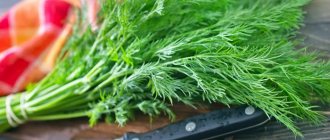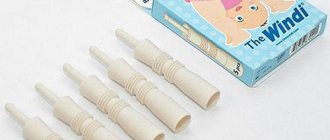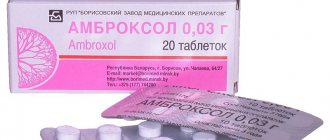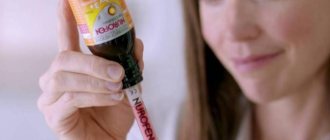pharmachologic effect
The pharmacological effectiveness of the syrup is due to a carefully selected combination of extract from a mixture of medicinal and wild plants, which have long been used by humans for healing. The syrup contains components rich in vitamins, minerals, essential oils, flavonoids and other valuable biologically active substances (BAS). Motherwort herb contains sugars, glycosides, alkaloids, essential oil, provitamin A, ascorbic acid, tannins and dyes, bitterness, and mineral salts. It has a sedative, hypotensive and cardiotonic effect. Valerian rhizome contains up to 3-5% essential oil, isovaleric acid, bornyl isovalerate, borneol, borneol esters of formic, butyric and acetic acids, pinenes, sesquitertenes, alcohols, as well as a number of alkaloids, glycosidic compounds, valepatriates, tannins, resins, ketones, starch and organic acids. It has calming and cardiovascular-improving properties. Used for diseases accompanied by nervous excitement and insomnia. Peppermint leaves contain essential oil enriched with terpene alcohol menthol, tannins, flavonoids, and trace elements. It has a calming, analgesic, diuretic effect, and enhances capillary blood circulation. Melissa herb contains essential oil, gum, organic acids, flavonoids, carotene, vitamin C, bitterness, resins, and trace elements. It is used as a sedative for insomnia, an analgesic for headaches and neuroses. Hawthorn flowers contain flavonoids (quercetin, quercitrin), carotenoids, acetylcholine, choline, essential oil and other organic compounds. They are used as a mild vasodilator and have a sedative effect. Chamomile flowers contain essential oil consisting of the main biologically active substance - chamazulene, flavonoids, coumarins, sitosterol, choline, carotene, ascorbic acid, isovaleric and other organic acids and polysaccharides. They have a calming anticonvulsant and analgesic effect; dilates the blood vessels of the brain, relaxes smooth muscles. Chamomile glycopolysaccharides have immunostimulating properties. Cumin fruits contain fatty oil, proteins, flavonoids (quercetin), tannins, as well as a large amount of essential oil containing strong-smelling compounds (limonene, carvone, etc.). They are included in many medicinal preparations, including sedatives. Barberry fruits contain organic acids, sugars, pectin substances, and ascorbic acid. They stimulate appetite, quench thirst, and have a diuretic and antipyretic effect. Vitamin C is involved in many metabolic processes, increases the body’s resistance to external influences and infections, maintains the strength of the walls of capillary vessels, and promotes the body’s absorption of proteins, iron, and a number of vitamins. Vitamin B6 is involved in the metabolism of amino acids, proteins, nucleic acids and lipids.
Panalak syrup 200g
pharmachologic effect
Laxative effect
Composition and release form Panalak syrup 200g
Syrup – 100ml:
- active substance: lactulose (in terms of active substance) - not less than 44 g;
- excipients: purified water up to 100 ml.
Packaging: Liquid 200 ml in polymer bottles.
Description of the dosage form
Transparent viscous liquid, colorless to yellow with a brownish tint.
Directions for use and doses
Children from 3 to 7 years old - 5 ml per day with meals; children from 7 to 14 years old - 10 ml per day with meals; children over 14 years old and adults - 15 ml with meals.
Pharmacodynamics
It has a hyperosmotic laxative effect, stimulates intestinal motility, improves the absorption of phosphates and calcium salts, and promotes the excretion of ammonium ions.
Lactulose is broken down by the intestinal flora of the colon into low molecular weight organic acids, which leads to a decrease in pH and an increase in osmotic pressure and, as a result, an increase in the volume of intestinal contents. These effects stimulate intestinal motility and affect stool consistency. The physiological rhythm of emptying the large intestine is restored.
In hepatic encephalopathy and hepatic (pre)coma, the effect is due to the suppression of proteolytic bacteria by increasing the number of acidophilic bacteria (for example, lactobacilli); the transition of ammonia into ionic form due to acidification of the contents of the colon; bowel movements due to decreased pH in the colon and osmotic effect; as well as reducing nitrogen-containing toxic substances by stimulating bacteria that utilize ammonia for bacterial protein synthesis.
Pharmacokinetics
Absorption is low (renal excretion is 3%). Without being absorbed, it reaches the large intestine, where it is broken down by intestinal flora. Completely metabolized at doses of 40 - 75 ml; at higher dosages, it is partially excreted unchanged through the intestines.
Indications for use Panalak syrup 200g
Lactulose is intended for oral administration, during or after meals. Recommended as an additional source of lactulose to normalize stool and cleanse the intestines.
Contraindications
Individual intolerance to components.
Overdose
If a very high dose is used, abdominal pain and diarrhea may occur. In this case, it is necessary to reduce the dose or stop taking the drug.
Side effects Panalak syrup 200g
Side effects are usually mild and reversible and are a consequence of exceeding the dose. In the first days of taking lactulose, flatulence may occur, which, as a rule, disappears after 1 - 2 days.
Drug interactions
When using therapeutic doses of lactulose, no clinically significant interactions with other drugs were observed; however, it is not recommended to take the drug within two hours after taking another drug. Antibiotics and antacids reduce the effect of Lactulose. Changes pH-dependent release of enteric drugs.
Indications and contraindications for use
When can you take Siresp?
Siresp is mainly included in the complex treatment of pathologies of the respiratory system. The drug is widely prescribed in outpatient and inpatient settings. The main indication for the use of Sirespa is the development of broncho-obstructive syndrome against the background of pathology of the respiratory organs. Clinically, this is evidenced by the following symptoms:
- the appearance of expiratory shortness of breath (with prolonged exhalation);
- participation of additional muscles of the chest in the breathing process;
- changes in skin color (appearance of pallor or cyanosis);
- frequent unproductive cough with minimal sputum.
The syrup is effective for bronchial obstruction
These clinical symptoms accompany a number of pathologies:
- acute respiratory infections;
- laryngitis;
- tracheitis;
- bronchial asthma (here Siresp is prescribed exclusively as part of combination therapy);
- whooping cough;
- measles.
Additionally, Siresp is used as part of therapy for the occurrence of various allergic pathologies, mainly localized in the respiratory tract. These include allergic rhinitis and atopic bronchitis.
When is Sirespa prohibited?
It is not recommended to prescribe Siresp during pregnancy. The studies conducted could not reliably refute the absence of toxic effects on the fetus. Therefore, the use of the drug is limited to situations where the benefits of its use outweigh the possible harm.
Pregnant women should not use this syrup to treat cough.
Due to similar considerations, this drug should not be taken during lactation and for children under two years of age.
Siresp should not be prescribed to patients with fructose intolerance or deficiency of intestinal enzymes for the breakdown of carbohydrates. The drug is also contraindicated in patients with a history of allergic reactions to aspirin. This is due to the possibility of cross-hypersensitivity to the excipients of the drug.
Patients with diabetes mellitus should take Siresp with caution and only under the supervision of a physician, since their blood glucose concentrations may increase during therapy.
Features of using Sirespa
Before taking the drug, you must consult your doctor. Self-medication often does not lead to a cure, and the frequency of side effects only increases. Siresp in syrup form is used for children over two years of age. In addition to the 150 ml bottle, the package includes a special dispensing spoon, which allows you to measure the amount of the drug for a specific patient.
Siresp can be given to children only after a doctor’s prescription, and not before they reach two years of age.
Before use, it is necessary to calculate the dosage of Sirespa. To do this, it is necessary to assume that 4 mg of fenspiride per 1 kilogram of the patient’s body weight per day. The daily dose is then divided into two or three doses. 1 ml of syrup contains 2 mg of active ingredient. Siresp is usually taken before meals.
The duration of therapy is determined by the pediatrician, but usually it is up to one week.
Reviews
The drug is popular among patients and generally receives positive reviews. This is due to its effectiveness combined with a relatively low price.
- Victoria: “I liked the syrup. I gave it to my three year old son. Quickly combats unpleasant symptoms, inexpensive drug.”
- Anna: “A good drug for combating initial obstruction. Previously, the cough often turned into obstructive bronchitis, but then the doctor noticed dry wheezing at an early stage and prescribed syrup. This helped stop the process. The downside is the bitter taste.”
- Alice: “The advantages are quick relief from unpleasant symptoms, affordable price - cheaper than analogues. The downsides are possible allergic reactions and a bitter taste. Overall, the drug is not bad.”
When is it appointed?
The drug is prescribed to combat symptoms of diseases of the upper and lower respiratory tract:
- chronic bronchitis accompanied by respiratory failure;
- respiratory disorders due to influenza, measles, whooping cough;
- sinusitis;
- bronchial asthma;
- bronchospastic syndrome;
- otitis;
- nasopharyngitis;
- rhinotracheobronchitis.
Overdose and side effects
An overdose of the drug may lead to nausea and vomiting, tachycardia, drowsiness or excessive agitation.
It is necessary to perform gastric lavage and consult a specialist. An ECG may be required.
In some cases, syrup provokes negative reactions . Among them the following are possible:
- cardiac disorders, moderate tachycardia (usually resolves after dosage reduction);
- diarrhea, vomiting, but more often a feeling of nausea;
- possible gastrointestinal disorders, pain in the stomach;
- sometimes drowsiness occurs;
- Allergic reactions are possible - rash, Quincke's edema, simple and pigmented fixed erythema;
- since the syrup contains parahydroxybenzoate, urticaria may develop;
- Dizziness is a possible negative reaction of the nervous system.
If these and other adverse reactions occur, be sure to consult a doctor.
Our publication will tell you how to recognize schizophrenia in a child.
The causes of residual encephalopathy in children are described in this article.
What causes cerebral palsy in newborns? Find out more in this post.
How to use
The drug is taken orally before eating. The dosage is determined by the type of disease, weight and age category of the patient. For convenience, a measuring spoon is included with the syrup.
There are a number of special instructions.
According to the instructions, for diseases of infectious origin, the syrup supplements standard antibiotic therapy.
Please note that the composition contains preservatives - methyl and propyl parahydroxybenzoate, which can provoke an allergic reaction. The same goes for dye. Reactions may be slow.
5 ml of syrup includes approximately 3 g of sucrose - this should be taken into account by those who suffer from diabetes.
No studies have been conducted on the effect of the drug on the ability to drive a car and operate various mechanisms.










